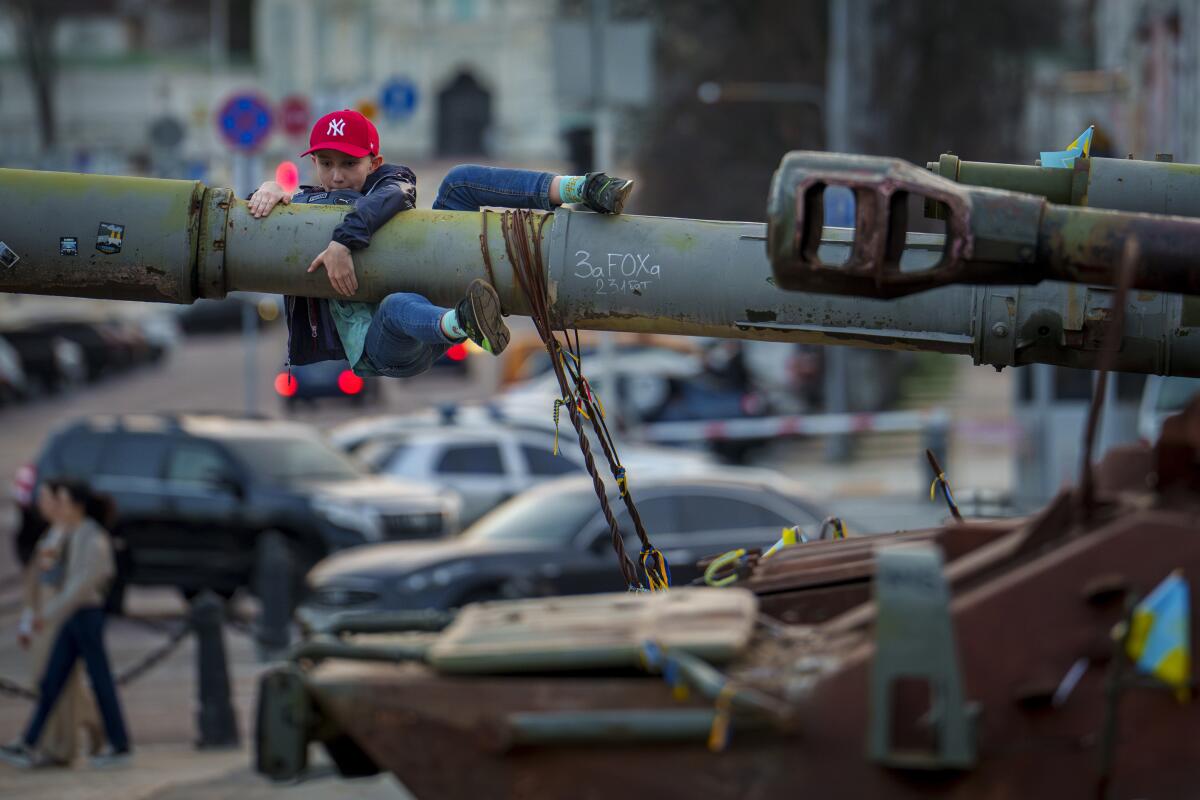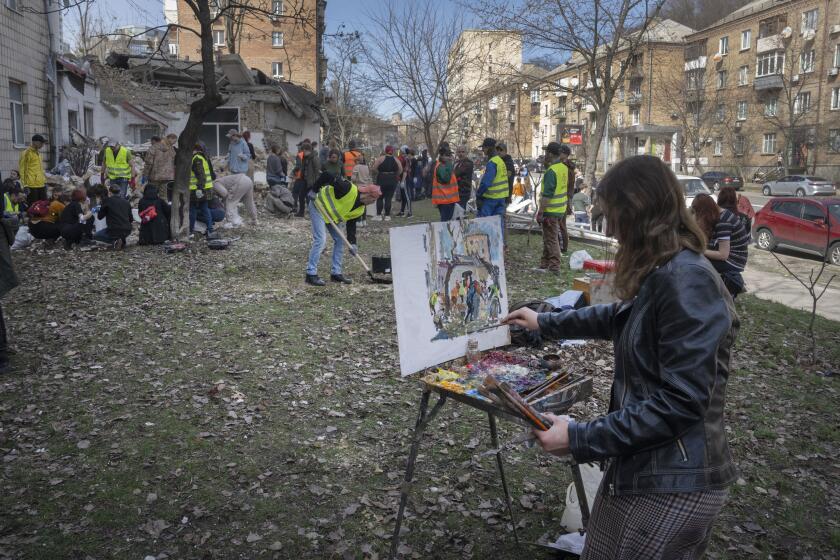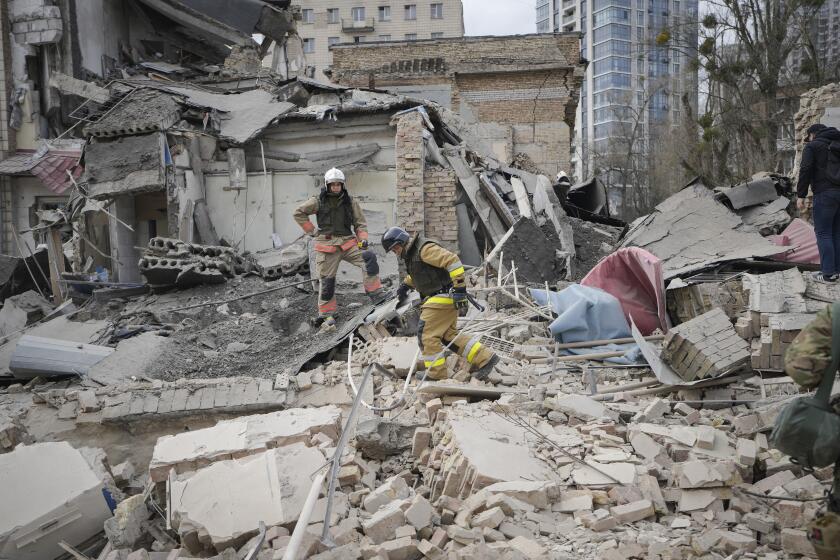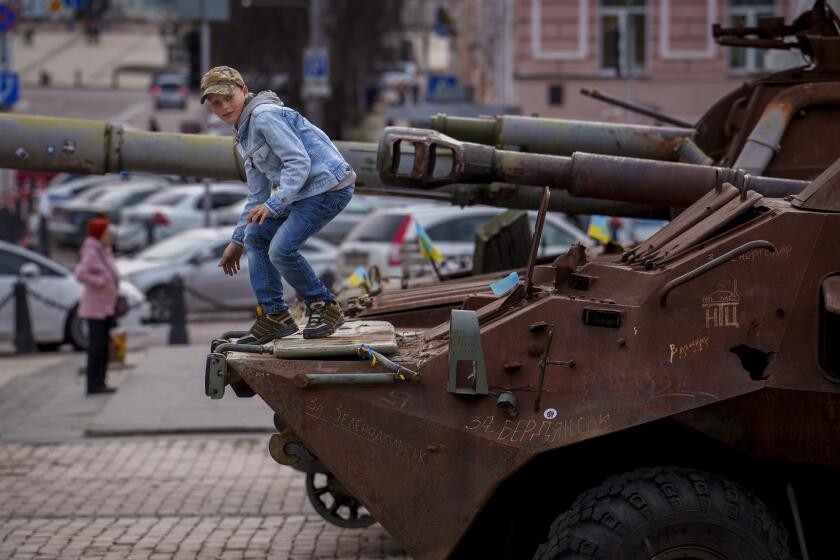Ukraine aims drones at oil refinery and drone factory in its deepest strike yet inside Russia

- Share via
KYIV, Ukraine — Ukrainian drones attacked one of Russia’s biggest oil refineries and a drone factory in the Russian province of Tatarstan, officials said Tuesday, in what appeared to be Kyiv’s deepest strike inside Russian territory since the war began more than two years ago.
The attack on facilities near the cities of Yelabuga and Nizhnekamsk, located some 745 miles east of Ukraine, injured 12 people, Russian regional authorities said.
In recent months, Russian refineries and oil terminals have become priority targets of Ukrainian drone attacks, part of stepped-up assaults on Russian territory.
Ukrainian drone developers have been extending the weapons’ range for months, as Kyiv attempts to compensate for its battlefield disadvantage in weapons and troops. The unmanned aerial vehicles are also an affordable option while Ukraine waits for more U.S. military aid.
Neither side currently has the capacity to make much of a dent on the approximately 620-mile front line.
A Russian cruise missile strike on infrastructure in Ukraine’s Lviv region has left one person dead while another died in an attack in the northeast.
Ukrainian security and intelligence officials said they targeted a “drone-production site” in Yelabuga, Tatarstan, using Ukrainian-produced long-range drones. Tatarstan is known for its high level of industrialization, and a factory near Yelabuga has reportedly built Iranian-designed Shahed exploding drones.
The Ukrainian officials also said that intelligence services were involved in an overnight attack on the Nizhnekamsk oil refinery.
The officials spoke to the Associated Press on condition of anonymity because they were not authorized to comment publicly. It was a rare claim of responsibility, as Kyiv officials normally decline comment about attacks on Russian soil, though they sometimes refer obliquely to them.
The AP could not independently verify the claims.
Russia has commonly used Shahed drones for aerial attacks on Ukraine, including major barrages deploying up to 90 of them at a time in a bid to overwhelm air defenses.
Tatarstan officials said the attack didn’t disrupt industrial production, while Nizhnekamsk’s mayor said the attempt to strike the refinery was thwarted by air defenses.
Nine people were injured in a strike on the Ukrainian capital, with the Pecherskyi district hit hardest, according to the Ukraine Rescue Service.
Russian Defense Minister Sergei Shoigu said Kyiv was trying to divert attention from its military setbacks by attempting to strike the Russian territory “to persuade its Western sponsors that it remains capable to confront the Russian military.”
Speaking during a meeting with the top military brass, Shoigu claimed Russian troops have gained more than about 155 square miles since the start of the year.
Kremlin spokesman Dmitry Peskov said the Russian military was taking steps to strengthen defenses against such attacks.
“The military is working to minimize this threat and eventually remove it altogether,” he said in a conference call with reporters.
Ukraine previously has launched drone attacks in and around St. Petersburg, which lies about 620 miles north of the border. But the facilities in Tatarstan, a province on the Volga River, appears to be the most distant target Ukraine has tried to hit.
Ukrainian President Volodymyr Zelenskyy said last year his country had developed a weapon that hit a target 400 miles away, in an apparent reference to a drone attack on Russian soil.
Ukraine’s armed forces say Moscow launched a large-scale attack on energy infrastructure, with a barrage of 99 drones and missiles hitting the country.
Late last year, Ukraine’s minister for digital transformation, Mykhailo Fedorov, said that the government was bent on building a state-of-the-art “army of drones ” and that its value to the war effort will be evident by the end of this year. Ukraine trained more than 10,000 new drone pilots last year, he said.
Ukraine has also developed deadly sea drones that have struck Russian navy ships in the Black Sea. Those successful strikes have embarrassed the Kremlin, and on Tuesday Russian President Vladimir Putin signed a decree to appoint Adm. Alexander Moiseyev as the new navy chief, the Russian Defense Ministry said.
Putin also named Vice Adm. Sergei Pinchuk as the new commander of the navy’s Black Sea Fleet after the dismissal of his predecessor, Adm. Viktor Sokolov.
Meanwhile, Ukraine’s air force said Tuesday that it intercepted nine out of 10 Shahed drones launched overnight by Russia in the latest attack on the country’s power grid.
Such attacks also claim civilian lives. Volker Türk, the United Nations high commissioner for human rights, said Tuesday that the war has killed more than 10,500 Ukrainian civilians and injured more than 20,000.
“The conflict increasingly is becoming entrenched and protracted, punctuated by recurring waves of attacks, as seen across the country last week,” he said in a speech.
Novikov writes for the Associated Press.
More to Read
Sign up for Essential California
The most important California stories and recommendations in your inbox every morning.
You may occasionally receive promotional content from the Los Angeles Times.













